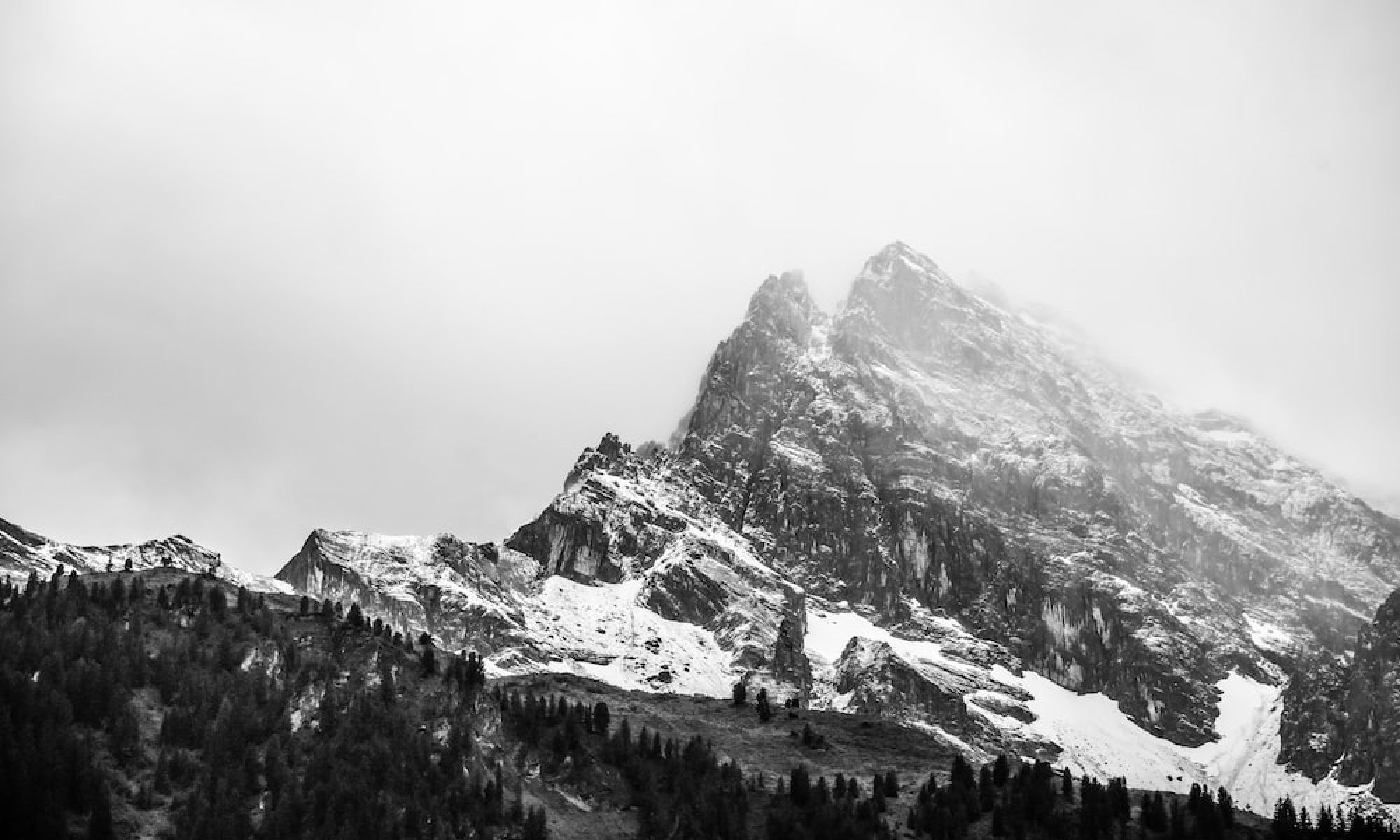I want to try to unwrap a simple but important concept in hopes that it might change not only the way you look at risk in your own trades/ideas but also the risk of others as you look to take advantage of their positioning.
I’ll be honest, part of me wants to just be dumb and trade my system. I have a great system and I love trading it every single day. However, in the interest of maintaining more than a gorillas intellect, I will try to expand upon a topic I find interesting. I will also show some trade examples that help make my point.
To understand the level of “risk” we are dealing with, we must agree that…
Markets are random.
This is true in the sense that what appears to be happening often is not and that we, not matter how hard we try, can never know what the next price will be. Understand that I believe that we can build some logic to what is more or less likely to happen yet, we can never know before hand. It’s only in hindsight that market appear non-random.
Therefor, every position has risk of loss.
I am not some options guru, I trade futures and thus cannot mitigate my risk with Greeks, Romans or Babylonians. It’s all raw, straight forward positional risk. I can however take a concept from a previous post to illustrate my view of Risk vs Consequence in markets and attempt to give you a sense of how I see exposure in intraday trading.
I will reference this previous post, read it to follow along: Rethinking Failure
In the post above, I reference a free solo climb I did vs a multi-pitch climb. The two are very different from one another and for our purposes, generalizations will suffice.
In the instance of a free solo climb, the climber chooses a reasonably easy grade, one very much within their skill level and climbs it without protection. Meaning, no bolts, nuts of cams in the rock to catch them. If they fall, they fall to the deck below and become… jelly.
In the second story, I am on a multi-pitch climb of much harder grade. Pressing the limit of my climbing abilities and requiring protection to avoid death.
Climbing has some but not much randomness. Therefor, you can do a reasonable job knowing which grade you can solo and which you cannot. Add earth quacks or random fast moving storms and you have something more like markets.
Difficulty
The free solo climb is 5.5. It’s a very easy grade to climb and pleasant if not a bit boring without rope removal. Many would likely choose this as a route to climb if it was a bit shorter. (1600 ft or so) It can be a bit of a grind. The multi-pitch climb was a 5.11a finger crack. Much harder.
Let’s say these two climbs represent twos strategies. There is a hard one and there is an easy one.
Consequence
It might be lost in text but I will try.
In the solo climb, despite it being easier (much) it is of much higher consequence. What is on the line, death. While the other multi-pitch climb, although scarier has much lower consequence.
Risk
In the solo climb, you are very unlikely to fall. At this grade, it’s almost a sure thing that, with solid experience and a cool head, you will be just fine. However, if you fall, you are dead. In the multi-pitch, you are sure to fall but, that fall should only result in some lost height and likely not your flattened corpse 400 ft below.
The Math
Really quickly, let’s take these three ideas and make a bit of a risk map.
Option #1
Easy objective = High Consequence and LOW Risk of Occurrence.
Option #2
Hard Objective = Low Consequence and HIGH Risk of Occurrence.
If these two are your choices, people choose option 1. Think, selling naked options. high win rate, deadly loss risk.
But we see this happen intra day too!
People are constantly choosing to be in trades like option 1. They choose the easy trade, which looks high probability and ignore the fact that they are interacting with is as high consequence.
I want to be the person who chooses the trade that is low probability, low consequence.
Why?
Because the kinds of people who choose the high probability/high consequence trades will be the ones who fall to their death before giving up on the idea that they are falling. See, attachment is also a common human behavior. Rarely do people lose with grace and therefor, once they begin to lose, we can count on them to keep losing. All the way to the ground below.
Let’s keep moving – CHARTS!
With this concept in mind, let me show you some charts from the past few days. I will not show my fills but I will show you examples I did take.
Perceived Risk vs Actual Risk
In the chart below, you can see that we filled the gap, built a nice base rear prev day close and are now moving higher. We are in a strong uptrend, had a gap up and it would seem, the drift higher has begun. The easy trade here is to start buying dips if you are not long from the gap.
The real question isn’t about trend. The real question is, who’s not wearing a seat belt?
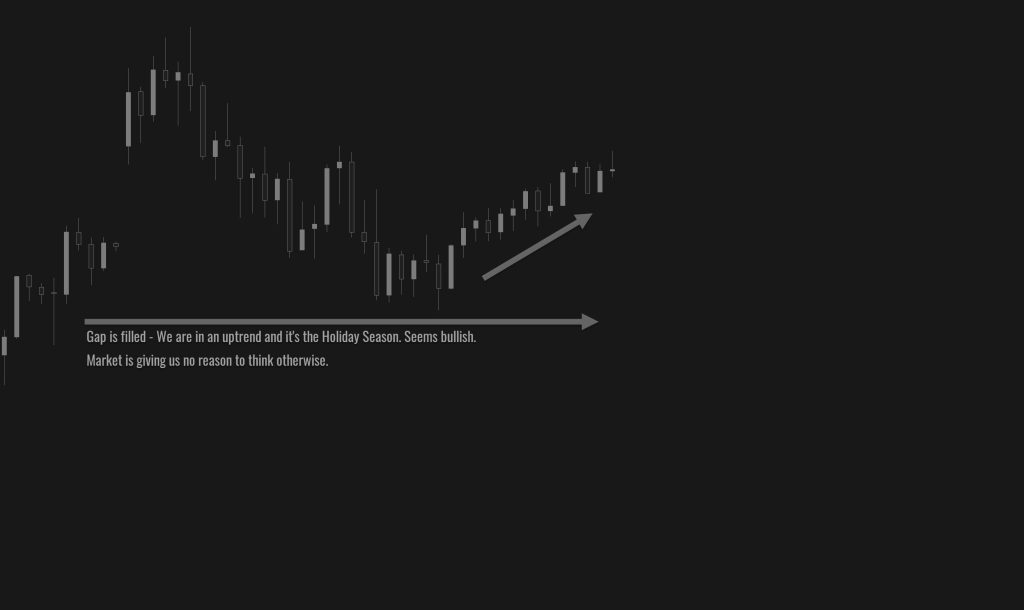
OOPS…
I was in this short before it broke.
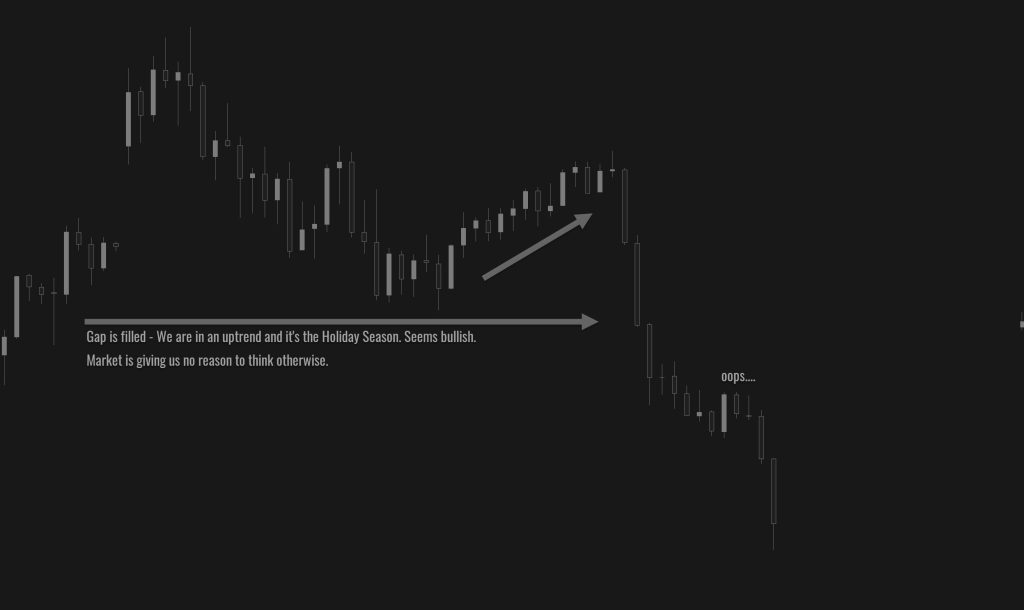
To go back to our climbing analogy, it was clearly longs who were over exposed without a rope.
The easy trade was long. A mellow day in markets you might think. Perceived risk was low but due to the complacency of longs, even here at ATH’s, the realized risk was fairly high. Especially as it applies to intraday trades.
Let’s look at another, less dramatic.
Here we have double gap up days and a breakout from prev day high.
This looks about as good as a long can look if you ask me. Maybe the 5 min bar pulled back a bit far before the strong closing bar but there is no reason to think this is a high probability short right here.
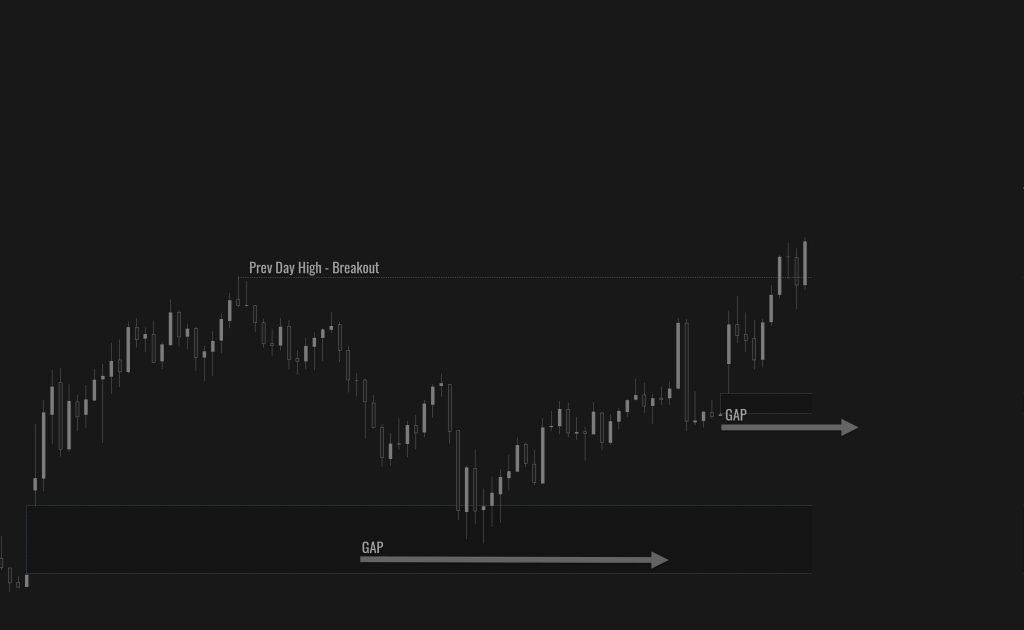
I took this short.
Why?
Maybe because I am addicted to pain and only trade for the thrill.
Maybe because I understand that while this trade may be unlikely to be a winner, if we do turn, the guys and gals under are likely to be caught off-guard. That is all I need.
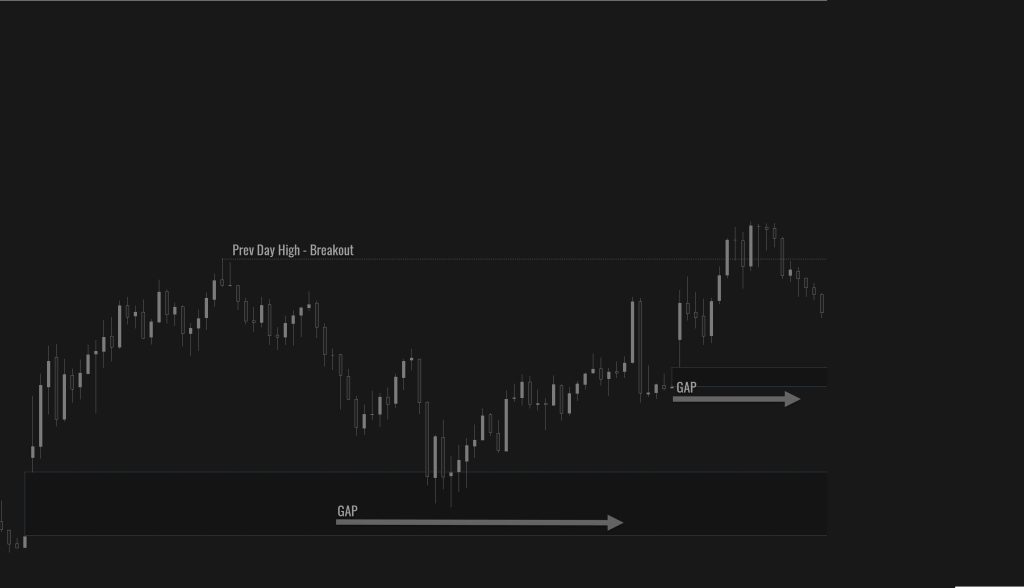
It did so happen to be the case that we offered back into range here after a look above.
We’ve all seen a false breakout. I get that. Nothing special here.
What is special is that many traders look for what is happening right now without understanding how people are emotionally positioned into those locations.
Risk
Risk alters the minds normal thinking operations. It changes what you will do and why you will do it. When people look for “Low Risk” they are willing to take on “High Consequence” in order to do so. This is why markets prey on so many people. It’s not because they are difficult but because people struggle to understand the complexities of risk and what your mind will do to avoid it.
What I aim to do:
I aim to take on the worst looking trades in order to Increase Risk and Reduce Consequence.
I say it this way because I want you to understand that I am not fading moves. Much of the time, I am in line with the trend. However, I do try to find the group who is most likely to be both offsides AND unwilling to admit it.
Increase Risk
When I say increase risk, what I mean is not increase the amount of potential loss. I trade with a 10pt stop on NQ. My aim is to increase risk in the way a protected climber increases risk. The likelihood that I fall is high. The likelihood I am here to try again tomorrow is 100%.
Nuance
For me, price action patterns are a lost cause. So is Auction Market Theory and many other more complex strategies. However, people are fairly easy.
You should be able to look at price and see where the potential for one side to become offsides is high BEFORE it is represented in price. Be a visionary for what could be before others have yet to get it in view.
Then, understand that you have plenty of equipment to protect you as you climb through your capabilities.
I trade the absolute ugliest things I can find because I believe that markets are random and people can’t handle the unplanned risk.
That is how I read charts. I want to be climbing at my max effort, fingers pealing off the wall and a rope to catch me below. I want the guy on the other side of my trade to be having a relaxed day at the crag, enjoying himself, climbing well within his skill level. Then I want some random fluke storm to blow in and test us both.
